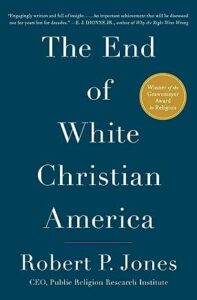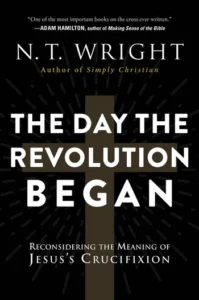 Summary: The era of White (Protestant) Christian cultural, political, and demographic dominance of the United States is over.
Summary: The era of White (Protestant) Christian cultural, political, and demographic dominance of the United States is over.
The starkness of the message of The End of White Christian America is as clear as its cover. Demographically (and this is shared in detail), the United States is no longer dominantly White Protestant. The more controversial suggestion that the political and cultural dominance of White (Protestant) Christians is also over is also hard to argue with based on the evidence presented, but many Christians have not yet accepted that.
Whether you accept the two of these suggestions will probably depend on your geographic and cultural place in the US. The demographics are clear. However, many White Protestants continue to live in communities that are racially isolated. Especially those that are in rural or suburban communities. Culturally, shifts toward acceptance of gay marriage, the aging of second-generation immigrant communities, and the significant increase in White Americans who do not identify as Christian (nones) have, at the very least, limited the cultural dominance of White Christians.
Robert Jones is the head of the Public Religion Research Institute. PRRI is a well-regarded polling company. Much of the research cited in The End of White Christian America is from PRRI polls. I generally trust PRRI to do decent work, but I can understand the complaint that there is not more outside research cited in the book (although there is some.) Despite the heavy number focus, The End of White Christian America is quite readable. It is essentially public polling and demographic data combined with recent (mostly 20th and 21st century) cultural and religious history. The cultural and religious history is mostly done fairly well, but as with any historical accounting, there is room to quibble with the conclusions.
The most controversial part of The End of White Christian America, in my mind, is about the shift in attitudes toward gay marriage in particular and the theological understanding of homosexuality in general. The polling on this is clear. The shift toward acceptance is complete. Even within Evangelicalism, there is a large minority that either politically or theologically accepts gay marriage as a good. Outside of Evangelicalism, it is not a large minority but an actual majority. Jones makes the argument that the Evangelical church needs to both accept they have lost this battle and to accept the full integration of gay Christians into the church formally. I hope that won’t keep people from reading the book. Regardless of your theological convictions here, Jones is making a case that many others are also making, but primarily, Jones is making a demographic case, not a theological one.









